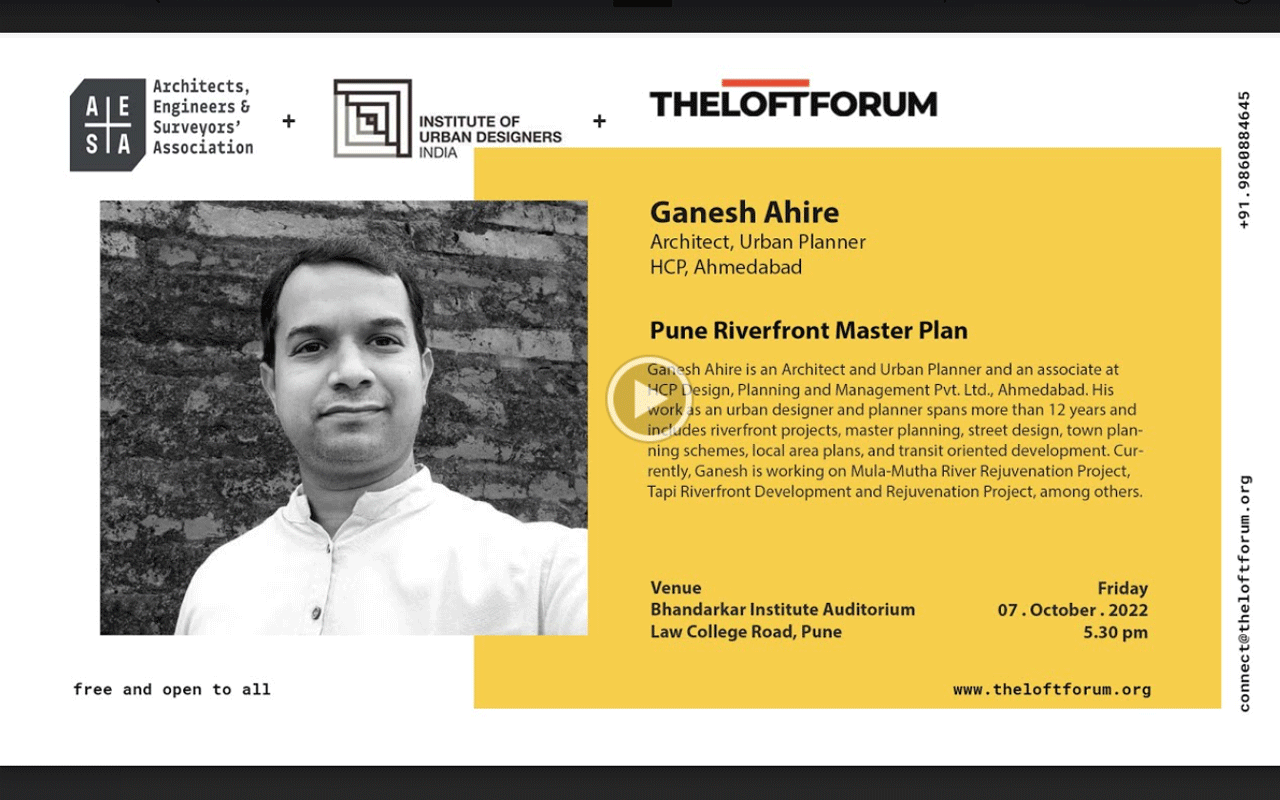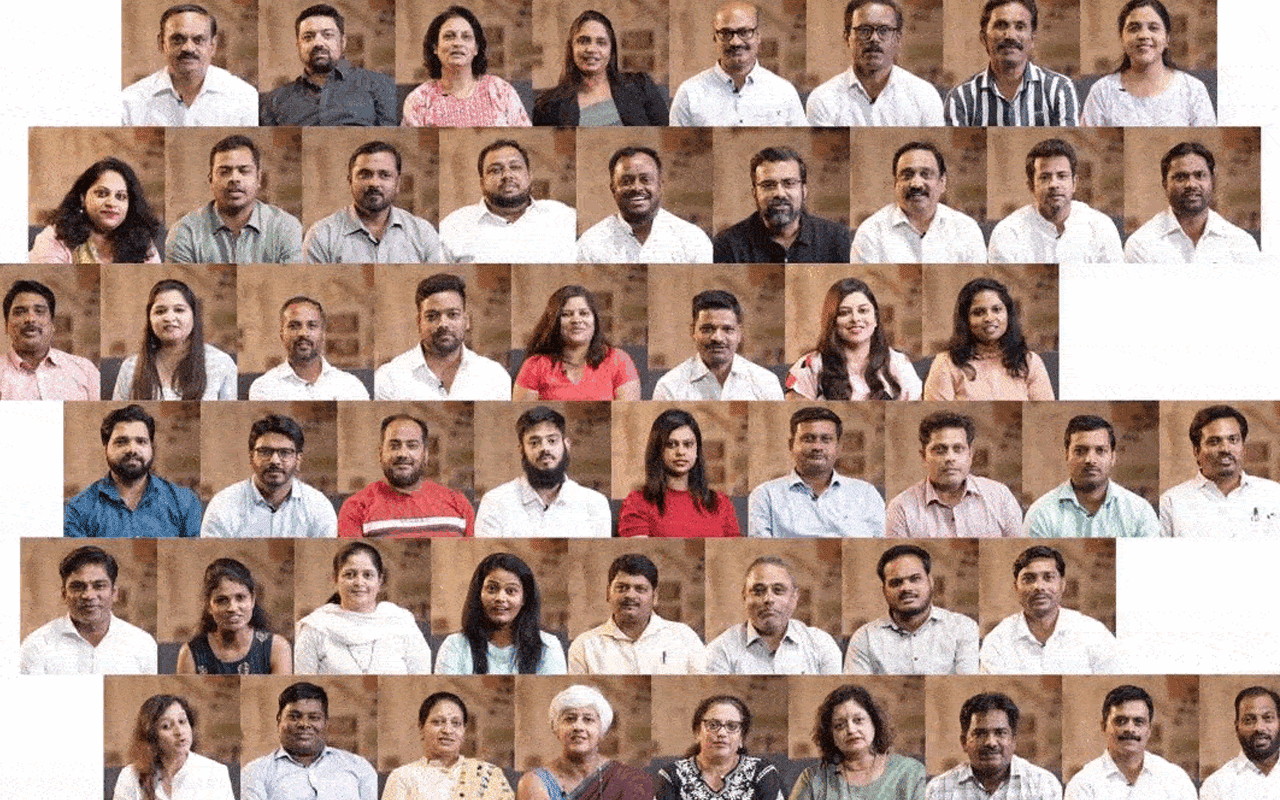
Pune Riverfront Development – A Discussion
Pune Riverfront Development – A Discussion https://www.youtube.com/watch?v=7QA3ilS314Y The proposed design for the Pune Riverfront Development (RFD) – by HCP Design, Planning & Management Pvt. Ltd.,
The proposed design for the Pune Riverfront Development (RFD) – by HCP Design, Planning & Management Pvt. Ltd., Ahmedabad and Center for Development Studies and Activities, Pune – is done with the aim of providing a much needed open space for the city. Both banks of the 44km of river length are divided into 3 zones based on the existing development and space available in the region: 2 riparian stretches adding up to almost 80% of the RFD and the rest 20% as an engineered section in the highly urban areas.
Though the design has been done after detailed topographic, hydraulic and environmental assessment, various issues are raised by activists, architects and citizens of Pune. One of the major being, the narrowing of river basin by building in the flood plain. The design justifies that the removal of the existing waste and the smoothening out of the irregular river banks will reduce the high flood line (HFL). Is that going to work?
Anagha Paranjape-Purohit, architect and environmental planner, and Partner at VK:e says, “We have more than five dams controlling the flow of water in the rivers and they have also worked with CDSA to integrate the peak rainfall aspect into the project to mitigate floods.”
Another major concern has been the cutting down of trees and change in the natural river ecology. On 29 April, more than 2,000 residents and activists staged a ‘Chalo Chipko’ demonstration in the Mutha riverbed to protest against the felling of trees for the proposed project. ” A city’s riverfront should be treated differently from the natural meandering image of a river,” adds Anagha. “It is not only going to be used by nature enthusiasts but also by a large variety of people who want recreational activities as an extension to the urban lifestyle enjoyed by the city. So of-course some amount of economic activity also needs to be considered. We have already done so much intervention in our natural landscape that not doing anything about it now would only make it worse. These temporary impacts during construction can be restored by replantation in a few years.”
“If you look at the list of about 3000 trees marked to be cut, you notice that many of the species are invasive. We have the Tree Authority Department and the Tree Act Policy to regulate this process and make sure only the absolutely unavoidable ones are felled”, says Ar. Dwaipayan Charavarty from VK:a.
The question is, are the due processes being followed?
Amita Nagarkatti, a citizen and a volunteer for a river revival group says, “Whatever is being implemented on the site is totally contradictory to what is planned or said by the government. The first requirement for any usable promenade should be the presence of clean water in the rivers right? And nothing seems to be happening to make that a reality. The numbers of trees actually cut are much more than what is recorded on paper.” When the river enters the Salim Ali Biodiversity Park, it flows through a rocky bed which supports diverse habitats, Kedar Champhekar, a Pune-based independent ecologist told The Wire. These micro-ecologies do not seem to be given special consideration in the proposed plan. While no development at all is not an option, should it not take place in a way that all the stakeholders – birds and reptiles included – are considered?
“The alternative proposals incorporating ecology are usually purist in nature. This needs to be balanced with urban aspirations as well. There is no mechanism in place to tie these smaller parts into a better whole” deplores Ajita Taware, VK:a Landscape team lead.
The Pune Riverfront Masterplan: https://www.pmc.gov.in/sites/
Some Issues Raised: https://sandrp.in/
River Revival Strategy by Oikos: https://

Pune Riverfront Development – A Discussion https://www.youtube.com/watch?v=7QA3ilS314Y The proposed design for the Pune Riverfront Development (RFD) – by HCP Design, Planning & Management Pvt. Ltd.,

The Economics of Architecture – Service vs Business Why do architects start their firm/practice? Most would give the reason of a passion to design with creative freedom.

Reimagining Architectural Work Culture https://www.youtube.com/watch?v=fatYZliQ-tY In the fast-paced world of architecture, success is not solely determined by the grandeur of designs but also by the